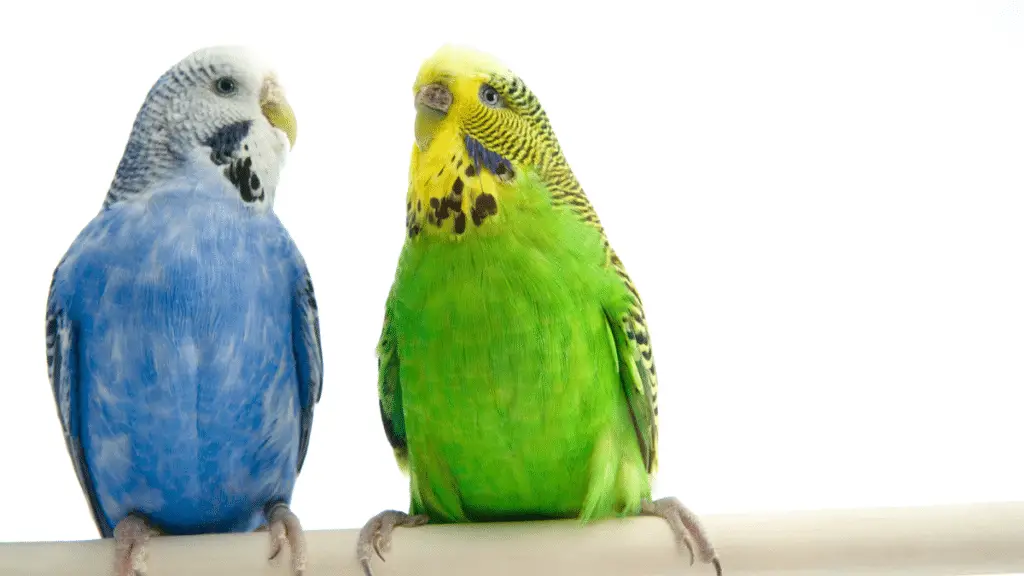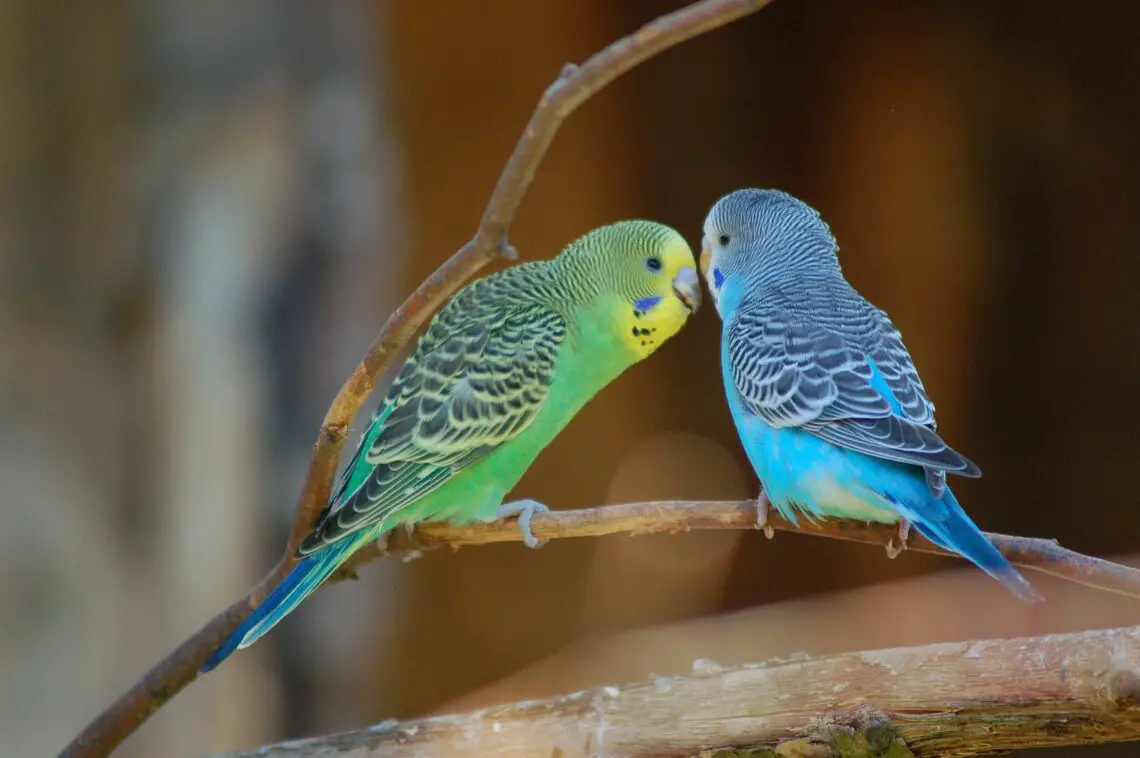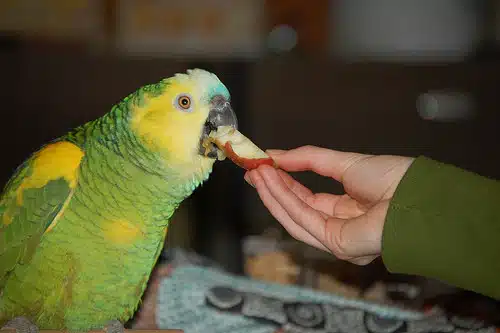Introduction
Do Parakeets Do Better In Pairs: Parakeets, also known as budgerigars or budgies, are small, colorful, and highly sociable birds that have captured the hearts of pet owners around the world. These delightful avian companions are renowned for their playful personalities and remarkable ability to mimic sounds and speech. Into the fascinating world of parakeet social behavior, The advantages and considerations of keeping these birds in pairs, shedding light on the unique dynamics that make them thrive when they have a feathered friend by their side.
We’ll uncover the reasons why many enthusiasts believe that parakeets are at their happiest and healthiest when they share their lives with a companion. In the world of avian companionship, parakeets have long been cherished for their charm, intelligence, and adaptability to human households. They are often chosen as pets not only for their vibrant plumage but also for their engaging interactions and the joyful melodies they bring into our homes. However, the notion of keeping parakeets pairs or small groups is grounded in the understanding of their natural behavior in the wild.
In their native habitat of Australia, wild parakeets are highly social creatures that form tight-knit flocks. These flocks provide safety, companionship, and opportunities for social learning. Parakeets communicate, groom each other, and engage in playful activities within these groups. When parakeets are kept in isolation, they may experience loneliness and exhibit signs of stress, which can manifest as feather plucking, excessive vocalizations, or even health issues. This insight into the natural behavior of parakeets raises the question of whether pet parakeets, too, would benefit from companionship.

Is it better to have one or two parakeets?
As a general rule, a pair of parakeets will be happier than a single bird. All your bird needs is a companion. which means another bird, or you and it will be content. If you only keep one bird, you will need to be its friend and companion. This means spending lots of time with the parakeet every day.
Whether it’s better to have one or two parakeets as pets is a common dilemma among prospective bird owners. Parakeets, also known as budgerigars or budgies, are highly social creatures, and their well-being can be significantly influenced by their living arrangements.
Many parakeet enthusiasts argue that having two parakeets is often better than having just one. Parakeets are naturally social birds that thrive on interaction and companionship. When kept alone, they can become lonely, bored, and stressed, leading to behavioral issues like excessive screaming or feather plucking.
By having a pair of parakeets, or even a small group, you can replicate their natural flock dynamic. They engage in playful activities, groom each other, and provide mutual emotional support. This not only enriches their lives but also reduces the risk of loneliness-related problems.
Will two parakeets bond with me?
So even if both birds were tame to begin with, once caged together, they would become less interested in being handled and at some point not want human contact at all. They are curious, and might show some interest in you, but they are very unlikely to become hand tamed.
Parakeets are known for their sociable and intelligent nature, and it is entirely possible for two parakeets to bond with their human caregiver while also forming a strong bond with each other. In fact, a pair of parakeets may be even more likely to engage with their owner, as they can provide each other with companionship, reducing their dependency on human interaction for socialization.
To foster a strong bond with your parakeets, spend time talking to them, offering treats, and providing positive interactions regularly. Gradually introduce your hand into their cage, allowing them to get used to your presence without feeling threatened. With patience and consistency, they may become comfortable enough to perch on your finger or shoulder.
That the bonding process can vary from one parakeet to another. While some parakeets may readily take to human interaction, others might be more reserved or cautious. Building trust and a strong bond takes time, so it’s essential to respect their pace and individual personalities.
Can you train 2 parakeets at once?
Unfortunately it is significantly harder to tame two budgies at once, especially if they’re bonded with each other. Neither one knows who you are, and they convince each other that you’re not to be trusted, rather than a tame budgie convincing an untamed budgie that the human is a friend, if that makes sense.
Start with Basic Commands: Begin with simple commands like step-up, targeting, or recall. Use a clicker or verbal praise and treat it as positive reinforcement. Train each parakeet separately initially to ensure they understand the commands.
Training Sessions Together: Once both birds respond well individually, you can start training them together. Having a companion can motivate them to learn from each other and compete for your attention.
Maintain Consistency: Consistency is key in bird training. Ensure that both parakeets receive equal attention and rewards during the sessions. This helps prevent jealousy or competition for rewards.
Observe Their Dynamics: Pay attention to the dynamics between your parakeets. Some may be more dominant or eager to learn, while others might be more passive. Adapt your training methods to suit their individual personalities.
Separate Training if Needed: If you notice that one bird is significantly lagging in learning or getting stressed during the joint training sessions, it might be best to revert to individual training sessions for a while.
Will 2 parakeets mate?
Your budgies will most likely show affection to each other in various forms including mutual feeding, preening and maybe even mating regardless of gender. Birds do not have labels for sexuality like us humans. Even two females housed together will display ‘homosexual’ behavior.
Sexual Dimorphism: Determining the sex of your parakeets is crucial. While some visual clues, such as the cere color (the fleshy area above the beak), can help identify their gender, it’s best to consult an avian veterinarian or an experienced breeder for accurate sexing.
Nesting Behavior: Mating behavior in parakeets often includes courtship rituals, regurgitation of food, and the creation of a nest. If you observe such behaviors, it may indicate that your parakeets are preparing to breed.
Egg-Laying: If a female parakeet becomes receptive to a male’s advances, she may lay eggs. To prevent unwanted breeding, remove any eggs from the cage promptly and avoid providing materials that mimic nesting conditions, such as nesting boxes or shredded paper.
Separation: If you do not want your parakeets to breed, it’s advisable to keep them in separate cages to avoid the possibility of mating. Bonded pairs can still live together without breeding if the proper precautions are taken.
Can I put 2 parakeets in a small cage?
Generally, a cage that’s 2’x2’x2′ will be adequate for two parakeets. Your cage should be long rather than tall to allow the parakeets enough room for exercise. You will also need an additional cage to keep your new parakeet in during the quarantine period.
Lack of Space: Parakeets need room to stretch their wings, fly short distances, and explore their environment. A small cage restricts their movement and can result in stress, boredom, and even health issues.
Territorial Disputes: When confined in tight quarters, parakeets may become territorial and exhibit aggressive behavior towards their cage mate. This can lead to injuries and strained relationships.
Inadequate Exercise: Parakeets require daily exercise to maintain their physical health and mental stimulation. A small cage does not provide enough space for them to fly and play, which can lead to obesity and muscle atrophy.
Mental Stimulation: Parakeets are intelligent birds that need mental stimulation to prevent boredom and behavioral issues. A larger cage with toys, perches, and space to explore provides them with opportunities for mental engagement.
Is it better to have 2 male or 2 female budgies?
However, if you are planning to have two same sex budgies (parakeets) together, it would be best to have two male budgies. Females tend to be more “aggressive” and some will not take well to being in a cage with another female budgie.
Two Male Budgies
- Male budgies, also known as cocks, are generally social and can form strong bonds with each other.
- They may engage in playful interactions, such as chasing each other and singing together.
- Male budgies can be less territorial and may be less prone to aggression towards each other.
- They are less likely to lay eggs, which can be an advantage if you want to avoid potential breeding-related complications.
Two Female Budgies
- Female budgies, also known as hens, can also form close bonds with each other.
- They may engage in mutual grooming and social activities.
- Female budgies can sometimes be more territorial and prone to squabbles, especially if they are in breeding condition.
- There is still a chance of egg-laying, although it is less common than with mixed-sex pairs.
Are parakeets happier in pairs?
As a general rule, a pair of parakeets will be happier than a single bird. All your bird needs is a companion. which means another bird, or you – and it will be content. If you only keep one bird, you will need to be its friend and companion. This means spending lots of time with the parakeet every day.
Natural Social Structure: In the wild, parakeets live in flocks, forming strong social bonds with fellow flock members. This natural behavior makes them more likely to seek companionship and interaction.
Emotional Support: Having a feathered friend provides emotional support and reduces feelings of loneliness, stress, and boredom. This can result in happier and more contented birds.
Stimulation and Play: Parakeets in pairs often engage in interactive play, which keeps them mentally and physically stimulated. They can chase each other, vocalize, and explore their surroundings together.
Mutual Grooming: Parakeets groom each other as a sign of affection and bonding. Mutual grooming not only strengthens their connection but also helps maintain their plumage.
Communication: Parakeets are highly vocal birds and enjoy communicating with their companions through chirping, chattering, and mimicry. Having a partner to communicate with can be highly enriching.
Is it better to get a male or female parakeet?
Males may be more open to being handled than females. Males will likely display courtship and mating behaviors when sharing an enclosure with other birds. Females are less active on average but will display aggression and become territorial when protecting their nesting box, eggs, or offspring.
Male Parakeets (Cocks)
Male parakeets are known for their vibrant and striking color colors, which can range from blue to purplish. This makes them visually appealing.
They are often considered more vocal and prone to mimicry. Males may be better at learning and mimicking songs and sounds.
Some people find that male parakeets can be more outgoing and willing to interact with humans.
Female Parakeets (Hens)
Female parakeets usually have color colors that are light blue, white, or brownish, which tend to be less intense in appearance.
They are generally quieter than males and may be less inclined to engage in mimicry. Hens may have a softer, more melodic chirp.
Some owners find female parakeets to be more gentle and less territorial, which can make them easier to introduce to other birds.

Conclusion
Whether parakeets do better in pairs is a matter deeply rooted in their natural social behavior and their needs as companion animals. While individual circumstances and the temperament of the birds themselves play a role, there are compelling reasons to consider keeping parakeets in pairs or small groups. Parakeets are social creatures by nature, forming close bonds and engaging in various social activities when in the company of their fellow feathered friends. When kept in isolation, they may experience loneliness, stress, and behavioral issues.
That can have detrimental effects on their physical and emotional well-being. By providing parakeets with companionship, whether through a single pair or a small group, pet owners can create an environment that more closely mirrors the birds’ natural social structure. This can result in happier, healthier, and more contented pets. Parakeets kept in pairs often exhibit increased mental stimulation, engage in playful interactions, and enjoy the benefits of mutual grooming and companionship.
To consider individual circumstances, as not all parakeets will get along harmoniously. Careful introduction and monitoring are crucial to ensure compatibility between birds. Maintaining a well-balanced diet, providing a stimulating environment, and offering regular social interaction with their human caretakers are vital aspects of ensuring the well-being of parakeets kept in pairs or groups. Ultimately, the decision to keep parakeets in pairs or as solitary pets should be made based on an understanding of their social needs and individual personalities.





No Comments